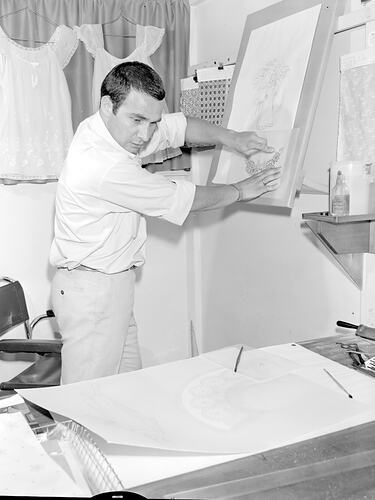At the time the Powerbook PB100 was released, DOS still ruled in much of the personal computer world. The unfamiliarity of DOS users with the mouse and graphical interface was amusing on a number of occasions.
At one lecture the speaker presented a number of slides containing carefully detailed line drawings illustrating the content. Sitting in the audience with the PowerBook on one knee, it was easy to create a new drawing document in ClarisWorks and proceed to reproduce the essence of the drawing in a few minutes. It wasn't perfect, but at first glance it looked a lot like what had been presented to the audience.
The speaker finished and walked past me to return to his seat, happening to glance at my screen on the way. The resultant double take was priceless and the exchange, which followed could have come from an Apple advertisement.
'That's my diagram. How did you get my diagram? Did one of my staff give it to you? Has there been a leak from my office? ' he asked.
'No, I drew it.'
'Drew it? What, just now? That isn't possible. How could you do that?'
'With drawing software on my Macintosh.'
'Drawing software? Macintosh?'
So I proceeded to show him how simple it was to create a document and draw in it with the trackball mouse.
'This must be very expensive?'
After further explanations, he took out a notebook and copied down the details of my hardware and software.
'We should have one in our office' he said, shaking his head in disbelief as he walked away.
This was at an international conference for yachting rule makers.
At an earlier session, several of the scientific types in attendance made fun of my 'toy' laptop, a line, which was being promoted by competitors of the Macintosh. At the time they were all running DOS. Their laptops were larger than the PowerBook and had the keyboard placed at the edge of the case, closest to the user.
There was no mains power available in the audience, so to conserve battery life, it seemed only logical to spin the hard drive down and turn the screen brightness to black. As the meeting progressed I proceeded to type into an apparently dead laptop and was able to capture verbatim much of what was being said. This behaviour was noted with puzzled looks by many.
As the morning wore on, the laptops around me died from battery exhaustion one by one. The owners were also having difficulty typing on their laps. Come the lunch break, my battery was low, but not too low to save and sleep. When the room cleared it was possible to access the only power point for a top-up charge.
The afternoon session was much like the morning, with the DOS users long having given up while I was still typing away. Afterwards those who had earlier made fun of my Macintosh toy now came up to find out what I had been doing. It was all quite simple. It was not essential to see what was being typed. It would not be perfect, but could be edited and corrected later in the day. So with the screen black and no hard drive spinning, this provided the most extended battery life.
Nobody ever teased me about my toy again. In fact it became the source to turn to if there was some doubt about what had been said in the meeting.
More Information
-
Keywords
-
Authors
-
Article types


